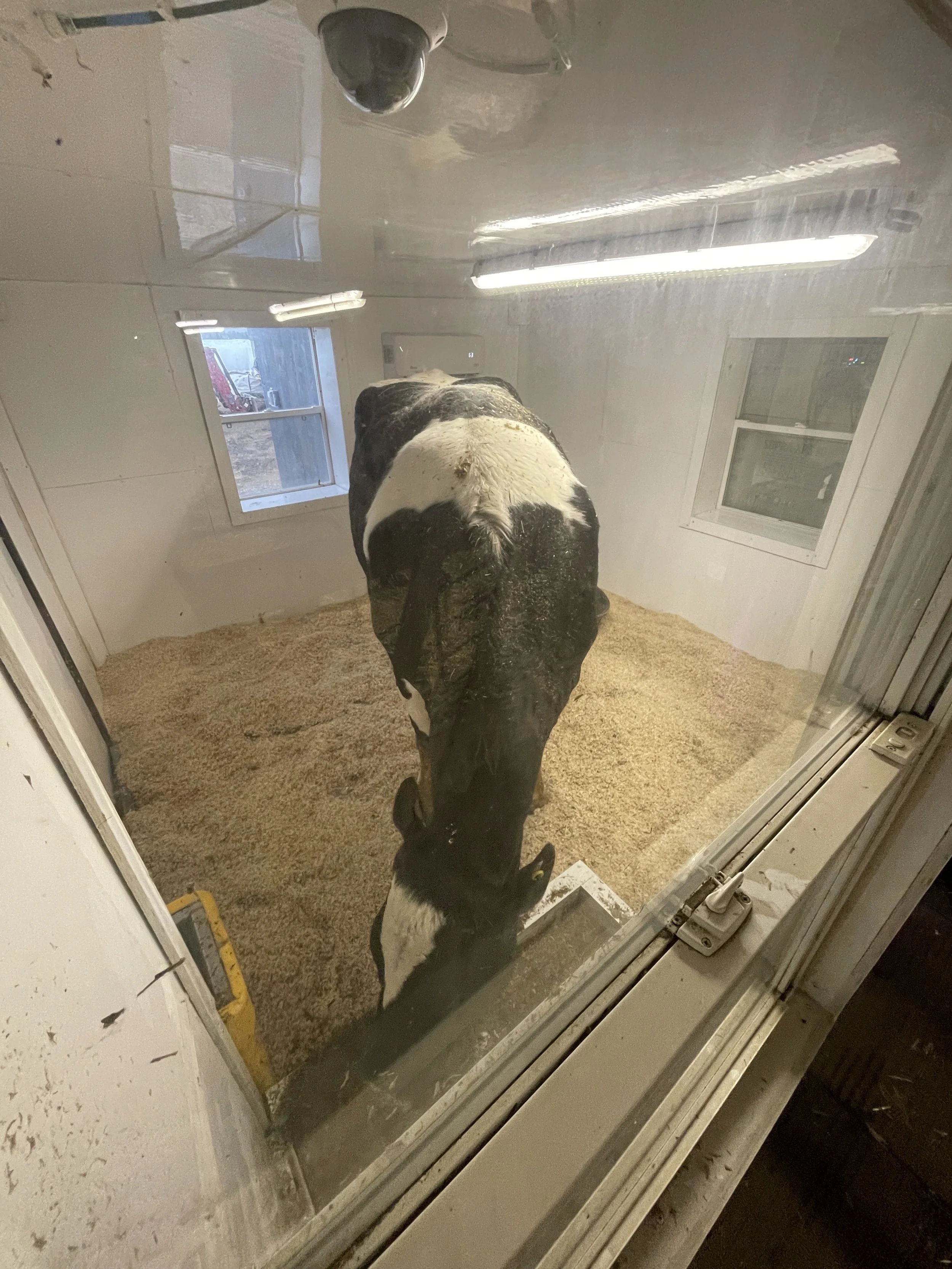
Evidence based nutrition®
Industry proven, peer reviewed and certified by ISO.
Environmental Chambers
Health, Efficiency, and Environmental Impact
Environmental chambers are specialized research facilities that allow for precise control and monitoring of the environment surrounding cattle. These controlled settings are crucial for in-depth studies on a variety of factors impacting bovine health, productivity, and their environmental footprint, particularly in areas like gaseous emissions and heat stress.
Our Chambers
Large Open-Circuit Environmental / Calorimetric Chambers
Holstein | Jersey | Simmental Cross (Genomic Tested)
Fermentrics operates two large open-circuit environmental chambers in our research barn. Our chambers are designed to have air continuously drawn through the chamber, and the differences in gas concentrations between incoming and outgoing air are measured to calculate emissions.
The chambers allow for the control of a broader range of environmental conditions (temperature, humidity, lighting, ventilation) to simulate specific climates, housing environments, barn conditions or mimic specific weather events.
Our highly specialized chambers measure both gaseous exchange and heat production by the animals, providing a complete picture of energy metabolism.
Measurements
Environmental Parameters:
Temperature: C/min + - 0.1
Humidity: %/min
Airflow and Ventilation Rate: CFM
Gas Concentrations: 02, CH4, C02, NH3 ppm +- 0.001% vol./10ms
Lighting: Diurnal (day/night) light cycles (lumen/hr)
Animal Parameters:
Water: L/desired measurement interval
Feed : Grams/min
Temperature: C/min + - 0.1
Body weight: (Kg)
Urine / Feces Output: Kg/desired measurement interval
Gas Concentrations: 02, CH4, C02, NH3 ppm +- 0.001% vol./10ms
Eating / Drinking / Rumination / Standing / Resting : min
Thermal Imaging & Body Weight
Our custom designed imaging and body weight chute is capable of imaging cows simultaneously from the top and side while recording bodyweight 24/7.
Feedlot trials
Pasture trials
Average daily gain
Locomotion Scoring
Rumen fill measurement.
BCS
Key Purposes and Benefits:
The use of environmental chambers offers significant advantages for bovine research:
Precise Measurement of Gaseous Emissions: Chambers are considered the "gold standard" for accurately quantifying methane (CH4), carbon dioxide (CO2), ammonia (NH3), and other gas emissions from individual or small groups of animals. This data is vital for developing strategies to improve efficiency and better understand the animals' energy metabolism.
Animal Welfare and Behavior Studies: Chambers allow for the observation of cows under specific environmental conditions, providing insights into their comfort, behavior, and overall welfare in response to different housing or climatic factors.
Studying Heat Stress: Researchers can simulate various temperature and humidity conditions to study the physiological and behavioural responses of cows to heat stress. This helps in developing effective cooling and management strategies to improve animal welfare and maintain productivity during hot weather.
Understanding Energy Metabolism: Detailed measurements of gas exchange (oxygen consumption and carbon dioxide production) help researchers understand how cows utilize energy from their feed for maintenance, growth, lactation, and pregnancy.
Nutritional Research: By controlling environmental variables, scientists can more accurately assess the impact of different diets and feed additives on animal performance, digestion, and nutrient utilization, including their effects on gas emissions.
Validating Mitigation Technologies: Environmental chambers serve as a controlled environment to test and validate new technologies and strategies aimed at reducing emissions or improving animal resilience to environmental stressors.





